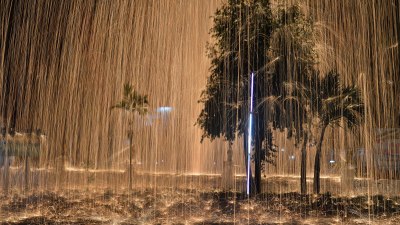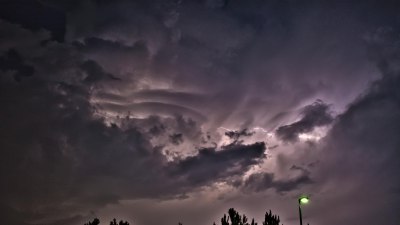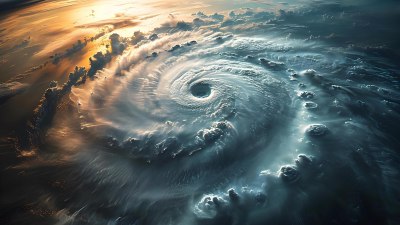What If Earth Had Triple the Current Rainfall How It Would Look
Exploring the implications of triple rainfall on Earth's ecosystems, landscapes, and human life.

Imagine a world transformed by an increase in rainfall, where every drop that falls paints a new picture of life on Earth. If our planet were to experience three times the current levels of precipitation, the landscape would shift dramatically. Entire ecosystems would emerge, while existing ones would struggle to adapt. This article takes you on a speculative journey into such a reality, examining the multifaceted effects of this drastic climate change on our world.
Changing Landscapes
Forests, fields, mountains, and cities would transform in the face of relentless rain. With threefold rainfall, landscapes would become more lush, with dense forests dominating the scenery. Vegetation would thrive, but the increase in moisture would also lead to widespread flooding. Low-lying areas and riverbanks would no longer be safe from rising water levels. Cities, often built in valleys and riverbanks, would see severe infrastructural challenges as streets become canals, and homes are submerged. Urban planning would have to evolve rapidly to manage these new water levels, potentially resulting in buildings designed to float or elevated living spaces.
Wildlife Adaptations
The fauna would undoubtedly respond to these environmental changes, with some species thriving while others face extinction. Amphibians like frogs and toads might experience a population boom, as their breeding grounds multiply. In contrast, animals reliant on dry habitats, such as snakes or hawks, could struggle to survive. With excessive water, the predator-prey dynamics in ecosystems would shift, leading to unpredictable consequences. Species would require adaptation mechanisms, with some possibly developing new traits to cope with the soggier world, while others perish due to the inability to compete or migrate.
Waterways Reimagined
Rivers would swell beyond their banks, turning into formidable waterways that change routes, creating new courses, and eroding existing landscapes. The increased water flow would also alter sediment distribution, affecting both habitats and human settlements while leading to greater occurrences of landslides and erosion. The world's lakes and oceans would expand, as rainfall redistributes water, but with this surplus comes the threat of water contamination and the incidence of waterborne diseases. Environmental challenges would press communities to innovate water management strategies, emphasizing purification and safety.
A New Climate
In a world where rainfall triples, the climate itself would undergo shifts. Regions currently considered temperate may turn tropical, while arid areas could transform into wetlands. Weather patterns would fluctuate alarmingly, with frequent storms, hurricanes, and heavy downpours becoming the norm rather than the exception. Climate zones would intermingle, leading to perplexing weather phenomena and a myriad of adjustments needed for agriculture and day-to-day life.
Crops and Agriculture
The agricultural landscape would face monumental change amid such excessive rainfall. Some crops may flourish in more humid conditions, while others that prefer drier soil would struggle. Farmers would need to adapt their practices to select crops that thrive in this new environment, requiring shifts in planting dates, perhaps favoring varieties known for robust growth in wet conditions. Advances in agricultural technology, such as engineered crops resistant to inundation, could emerge to help sustain food security.
Human Adaptation and Urban Living
Urban living would require radical rethinking. Streets might transform into waterways, and community infrastructure must develop to manage storms and floods. Elevated roads and floating buildings could replace traditional structures, and cities may need to be reengineered to incorporate extensive drainage systems. The concept of public transportation would shift, possibly resulting in water taxis or amphibious vehicles. Additionally, human migration may occur from increasingly uninhabitable regions, leading to demographic shifts and new cultural interactions as people adapt to a world marked by continuous rainfall.
Health Implications
Public health would face substantial challenges in these new conditions. Stagnant water would provide perfect breeding grounds for mosquitoes and other pests, leading to increased transmission of diseases like malaria and dengue fever. Waterborne diseases would necessitate heightened public health measures and education, focusing on hygiene and sanitation. Behavioral changes would likely occur, with communities forming new norms surrounding outdoor activities due to the constant presence of rain.
Entertainment and Lifestyle Changes
As the environment transforms, so too would lifestyle and leisure activities. Outdoor sports may decline in popularity, while activities centered around water would soar, such as kayaking and swimming. Festivals would celebrate the abundance of water, with cultural shifts reflecting the new relationship with the elements. Television and media would adapt, with content focusing on survival skills and navigating an aquatic life.
Ecological Footprint and Conservation Challenges
This dramatic change would require a reassessment of humanity's ecological footprint. Protections for endangered species would need to be more robust as natural habitats recover and adapt. Conservation efforts would take on new meaning, as communities strive to protect vital ecosystems from human impact and preserve the new biodiversity that emerges. Global summits would focus on collective action regarding climate change and conservation, fostering a more collaborative approach for sustainability.
Global Responses and Governance
The geopolitical landscape might shift significantly as countries navigate the challenges arising from increased rainfall. International cooperation would be crucial to address trans-boundary issues such as flooding and pollution, leading to treaties and regulations aimed at water management and environmental protection. Nations might need to work more closely together, sharing technology and strategies for agricultural adaptation, urban planning, and emergency response.
Conclusion
Envisioning a world with three times the current rainfall reveals the interconnectedness of climate, ecosystems, and human society. The challenges would be immense, but so would be the potential for innovation and resilience. Humanity's ingenuity would be tested as we learn to live in harmony with a radically changed environment. In a speculative future shaped by abundant rainfall, we might discover new horizons, inviting us to adapt and thrive amidst a world transformed by nature's inexorable forces.











